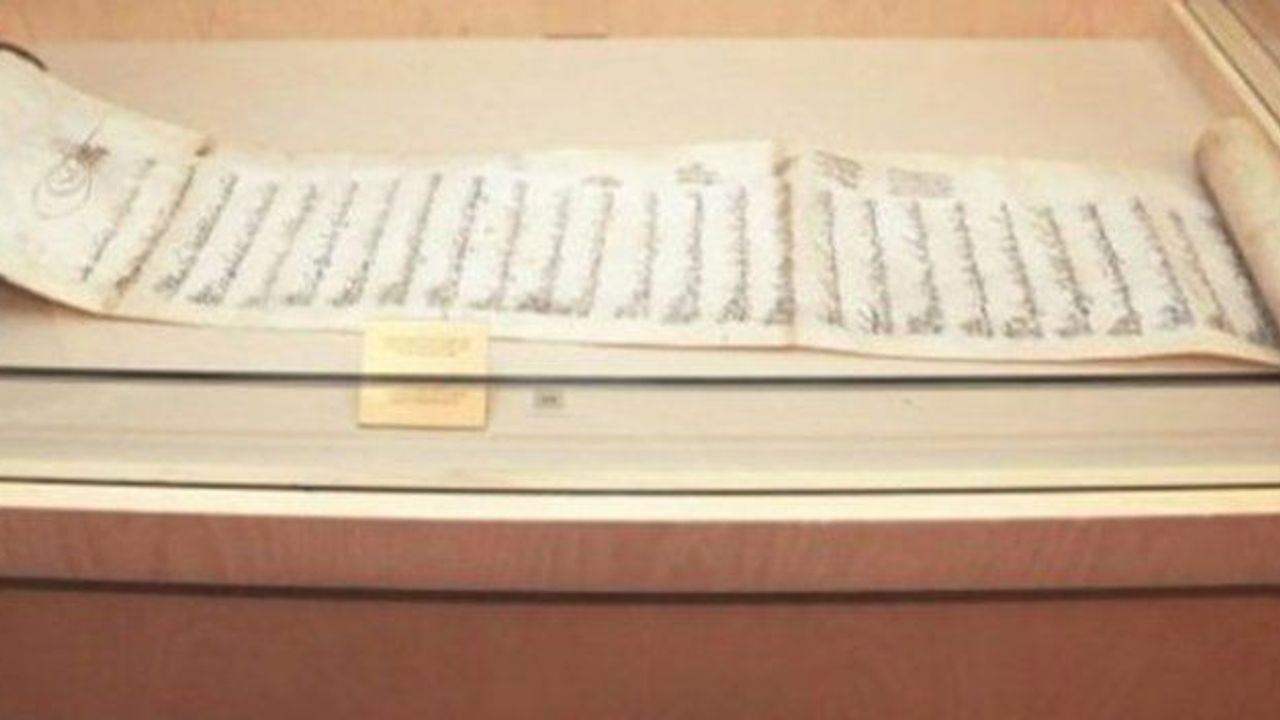Land registration of 26 countries in Turkey's hands
Documents remaining from Ottoman Empire Era show real owner of properties; 34th Sultan of empire, Abdul Hamid II, discovered to own more than 5,000 properties

Turkey has been holding the land registration of 26 countries remaining from the Ottoman Empire Era, which used to control much of Southeast Europe, Western Asia, the Caucasus, North Africa and the Horn of Africa for centuries, the General Directorate of Land Registry and Cadastre of Turkey said.
“The deed of places formerly controlled by the Ottoman Empire are in the hands of Turkey now. We want to help countries to solve their issues with these documents," Zeynel Abidin Türkoğlu, Head of the Archive of the General Directorate of Land Registry and Cadastre, said in his statement to daily Yeni Şafak.
“We have already shared land registration documents with Macedonia to solve its problems with Greece. We also gave the documents to Libya to solve its problems with Tunisia. Most recently, we handed over the document to the Cyprus officials. We also have the deeds of Syria, Iraq, Lebanon, Jordan, Saudi Arabia, Serbia, Bulgaria, Greece, Bosnia and Herzegovina, Kosovo, of all countries in the Balkan region," Türkoğlu said.
Sultan Abdul Hamid II among stakeholders
The classification and the research of the General Directorate of Land Registry and Cadastre of Turkey has found out a significant fact: the 34th Sultan of the Ottoman Empire and the 113th Caliph of Islam, Abdul Hamid II, was discovered to have owned 5,619 properties; 146 in Jerusalem, 58 in Almus and a large number of properties in Aleppo and Istanbul.
"In the Middle East alone, Abdul Hamid had 850 properties, none of which is owned by the state but independently," Türkoğlu said.
The finding of the Turkish officials is significant; it may pave the way for a large number of judicial processes aiming at handing over the properties to their real owners.
One of the major stakeholders are the grandchildren of Sultan Abdul Hamid II, who have the chance to apply to the Court of Human Rights and demand these properties," Türkoğlu pointed.
Sultan Abdul Hamid is one of the important figures of the Ottoman Empire.
Cadastral work almost completed
“Over 97 percent of cadastral surveys were completed. Only 3 percent of the total examination remained due to the disputation in some regions associated with terror," Türkoğlu said.
“We are trying to reach conclusions on the remaining 3 percent of the total classification, “ he told Yeni Şafak newspaper.
The years taking classification attracts the researchers from all around the world.
“Many Italian, British and American researchers came to do historical research; however, a large number of researchers coming to Turkey to examine the records are Japanese," Türkoğlu said.
“These people have the chance to examine the documents of the period until 21 March 1847," Türkoğlu added.
“One of the most important land registration documents belongs to Hagia Sophia. However, our archive includes the documents of many mosques, such as Fatih Mosque and Zeyrek Mosque," Türkoğlu said.
Turgut Özal's instruction started process
Türkoğlu emphasized that the work on the archive started at the instruction of Turgut Özal, who was the 19th Prime Minister of Turkey when he initiated the research process in 1984.
"In 1984, Turgut Özal (also the 8th President of Turkey) gave an instruction and started the sorting operation by opening archives which continued until 2004. And then we realized that some of the documents started to wear out, so we started to repair them and form a digital archive in 2010," Türkoğlu said.
Source: Yeni Şafak






